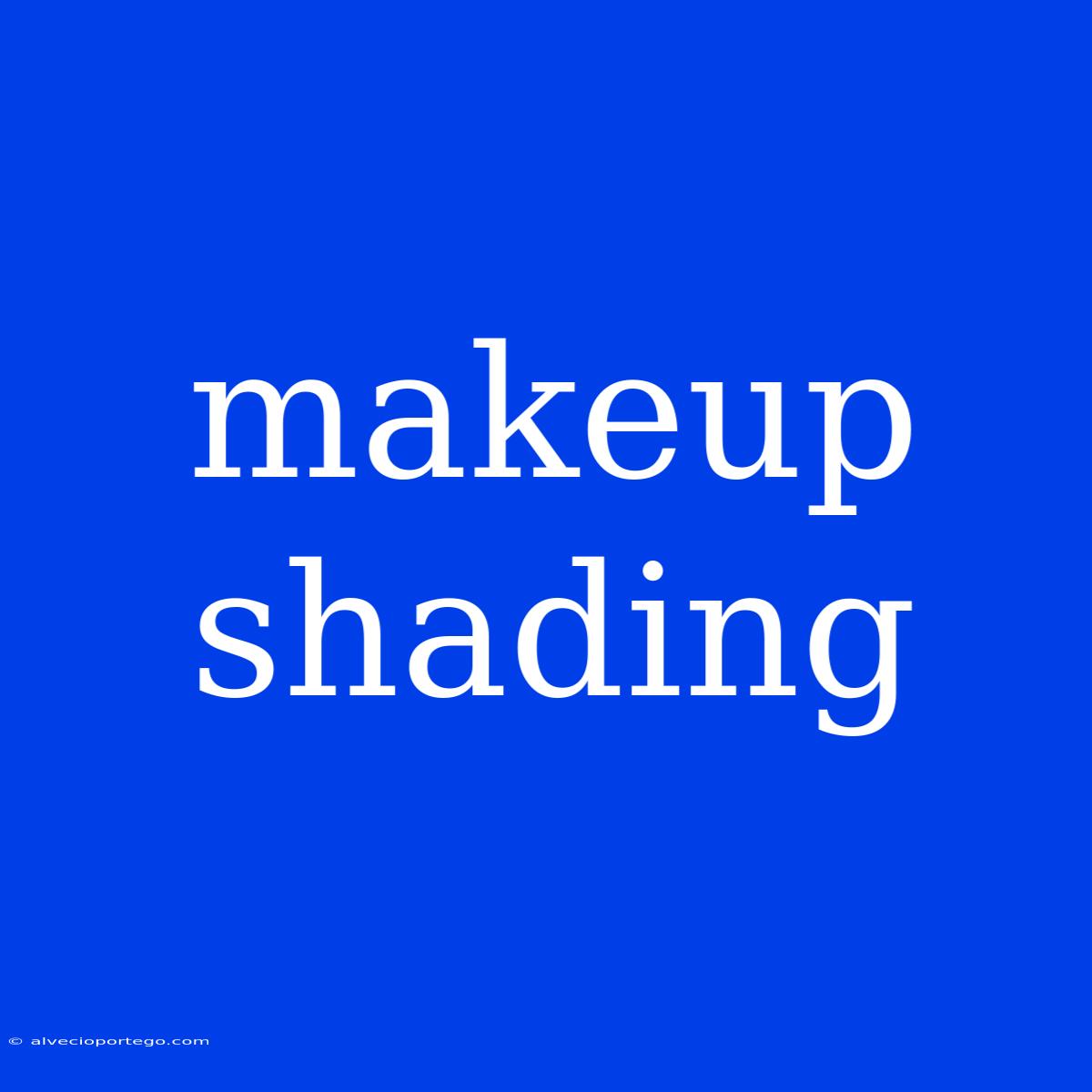Mastering Makeup Shading: A Guide to Chiseling and Contouring
Makeup shading, often referred to as contouring, is a transformative technique that uses light and shadow to enhance facial features, define bone structure, and create a more sculpted look. It involves strategically applying darker shades to create shadows and lighter shades to highlight specific areas, essentially "chiseling" your face.
The Power of Shading:
- Sculpted Features: Shading helps accentuate your natural contours, creating a more defined cheekbones, a slimmer nose, and a more balanced face shape.
- Depth and Dimension: By creating illusions of light and shadow, shading adds depth and dimension to your face, making it appear more sculpted and three-dimensional.
- Balanced Proportions: Shading can subtly adjust facial proportions, minimizing the appearance of a large forehead or a round face.
- Enhanced Features: Highlighting specific areas like the brow bone, cupid's bow, and cheekbones can make them pop, drawing attention to your best features.
The Basics of Shading:
1. Choosing the Right Shades:
- Contour: Select a shade that is one or two shades darker than your natural skin tone. Look for matte formulas in cool, warm, or neutral tones, depending on your undertone.
- Highlight: Choose a shade that is one or two shades lighter than your natural skin tone. Opt for luminous or shimmery formulas to create a radiant glow.
2. Understanding Your Face Shape:
- Heart Shape: Contour the temples and jawline, while highlighting the center of the forehead and chin.
- Round Shape: Contour the temples, cheekbones, and jawline, while highlighting the center of the forehead and chin.
- Oval Shape: Contour the temples and jawline, while highlighting the cheekbones, forehead, and chin.
- Square Shape: Contour the jawline and temples, while highlighting the center of the forehead, chin, and cheekbones.
3. Applying the Contour:
- Cream Contour: Use a brush or sponge to blend cream contour into the hollows of your cheeks, along your jawline, and at the temples.
- Powder Contour: Use a fluffy brush to apply powder contour to the same areas. Blend thoroughly for a seamless finish.
4. Applying the Highlight:
- Cream Highlight: Apply cream highlight to the brow bone, cupid's bow, and center of the forehead and chin.
- Powder Highlight: Use a smaller brush to apply powder highlight to the same areas, focusing on the high points of your face.
5. Blending is Key:
- Brush: Use a large, fluffy brush to blend contour and highlight seamlessly, ensuring no harsh lines are visible.
- Sponge: Use a damp makeup sponge to blend creams for a natural finish.
6. Setting the Look:
- Use a translucent setting powder to set both the contour and highlight, ensuring the makeup lasts throughout the day.
Tips for Shading:
- Start with a clean face: Apply moisturizer and foundation before contouring and highlighting.
- Use natural light: This allows you to accurately see your features and avoid over-contouring.
- Blend, blend, blend: The key to a natural look is seamless blending.
- Less is more: Start with a small amount of product and build up gradually.
By understanding the fundamentals of shading and practicing regularly, you can master the art of contouring and achieve a naturally sculpted, flawless look.

